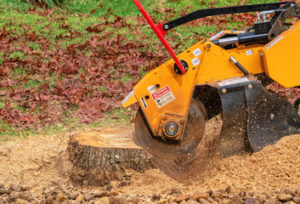Indian Weddings In Philadelphia And Surrounding Area are a beautiful and elaborate affair with much glam. While some of this glitz is for show, some of it’s for the sake of tradition and family.

One such ceremony is the Saptapadi. This involves seven rounds around the sacred fire and the couple articulating their vows of dharma, artha, kama, and moksha.
The mandap is where the main wedding ceremony takes place. It is a sacred structure that symbolizes the union of the couple and their families. It is traditionally made out of a white cloth with four pillars, which represent the fundamental pillars of life: Dharma (duty and righteousness), Artha (wealth and prosperity) Kama (desire and love) and Moksha (spiritual liberation). The pillars are also often adorned with flowers, and the whole arrangement is surrounded by a sacred fire, signifying purity and the beginning of a new journey.
Nowadays, couples tend to customize their mandaps, making them into works of art. Many spend months planning and building their own special structures before the big day. It’s not uncommon for them to use crystals, chandeliers and other expensive materials. They might even have a dedicated team of craftsmen who work on the project full-time.
A mandap’s decoration is not only meant to be eye-catching, but it must also reflect the couple’s style and personality. For example, the bride and groom will likely choose a lot of flowers that are meaningful to them or represent their favorite colors. Marigolds are a popular choice, as they symbolize joy and love.
Once the bride and groom are ready, they will enter the mandap together, surrounded by their family and friends. The prospective mother-in-law will rub the groom’s nose, a tradition that signifies her welcoming him to their home and family.
During the ceremony, the groom’s brothers will take turns giving the bride fistfuls of rice and offering their wishes for a happy marriage. The couple then tosses the rice into the sacred fire together in a ritual called homam. This is a heart-warming moment that celebrates the power of family and tradition.
Mangala Sutra
The mangal sutra is a sacred thread that binds the souls of the bride and groom together forever. It is worn in place of an engagement ring during the wedding ceremony and signifies that the couple will never separate until death does them apart. The groom ties it around the bride’s neck while the priest recites mantras and prayers. This is one of the most important ceremonies in an Indian wedding and should be taken seriously by both the bride and groom.
The couple then walks around the fire four times to symbolize dharma, kama, artha, and moksha. The priest also chants seven vows, including ones for prosperity, love, and spiritual liberation. After this, the bride races her husband to their seats, and whoever gets there first will rule the house.
During this ceremony, the groom uses a holy thread known as a Thaali or Mangalyam to tie three knots around the bride’s neck in the fashion of a necklace. It represents the groom’s desire to spend a lifetime with his bride and by wearing it, she agrees to that promise.
Many couples choose to customize their mangal sutra by adding a gold pendant, which is called a mangalyam, or other precious jewels. While traditional mangal sutras are black beads and gold pendants, modern designs use a variety of metals and gemstones to create a necklace that is both beautiful and meaningful.
The final event in the Indian wedding ceremony is the mangal pheras, which is when the bride and groom take their vows in front of a priest. The ceremony is typically held at the bride’s home and includes a number of fun traditions. The couple circles the ceremonial fire four times, representing dharma (duty and morality), artha (prosperity), kama (personal gratification), and moksha (spiritual freedom).
Haldi Ceremony
A Haldi ceremony is a fun and vibrant way to start the wedding celebrations. It involves the bride and groom’s family members applying turmeric paste to them symbolizing blessings, prosperity, and fertility. The paste is made with powdered turmeric, sandalwood, gram flour and milk or rose water. It can be applied in a variety of ways, from using your hands to brushes made out of grass. There is usually a ranking system in which the elders apply the paste first and then the rest of the family follows. It’s also very common for the groom’s friends and cousins to get in on the action as well.
The ceremony takes place before the wedding day and usually takes around an hour. The bride is adorned in her bridal attire and her maang tikka, which is a traditional headpiece that hangs down from the center of her forehead. The groom is dressed in a kurta with a brooch and bangles, or sometimes a sherwani.
It’s important to capture this moment as it’s filled with excitement, anticipation, and a sense of change in the air. It’s also a good opportunity for the couple to show off their chemistry and love. It’s a great time to incorporate some candid shots too.
It’s a good idea to use minimal retouching to preserve the natural texture of the turmeric paste. It adds a unique touch and glow to the images and can make them look more authentic. Also, try to emphasize the texture of their faces rather than making them look too smooth. It’ll give your images a more authentic Indian feel. And don’t forget to smile! It’s the most important thing during a Haldi ceremony.
Homam
When it comes to weddings in India, the rituals are truly unmatched! From the Baraat, where the groom is escorted to the ceremony on a horse while his family and friends sing and dance around him, to the Mandap, where the bride and groom exchange rings and vows to be faithful to one another, Indian wedding ceremonies are a beautiful mix of tradition and love.
Whether you’re getting married in India or just want to learn more about the culture, here are a few things you should know about this incredible country:
The day before the actual ceremony, Hindu brides have their Mehendi (or Henna) parties. This is a special celebration where the bride and her closest family members get their hands covered in henna, which is thought to bring good luck and happiness to the couple as they embark on their marriage journey. The Mehendi also marks the beginning of the “maid/matron of honor” relationship, which is a close and intimate relationship with the bride’s relatives who are now considered her family.
After the Mehendi, the wedding ceremony begins. The bride is crowned with her husband’s ring and receives her mangal sutra, which is a sacred necklace that signifies the bond of marriage. This is a very meaningful and symbolic moment, as it represents the union of two souls and the eternal commitment to each other.
Once the ceremony is complete, the couple is showered with rose petals and rice by their loved ones. The bride then gives her parents a handful of rice and coins, which she throws over her head as she exits the venue. This is meant to symbolize repayment for all the care and support they provided her throughout her life.
Fire Ceremony
If you’re lucky enough to get invited to a wedding in India, the experience is nothing short of amazing. You may have seen Indian ceremonies in movies or swooned over seriously stunning pictures from them, but to actually be at one is a truly unique and uplifting experience.
During this ceremony, a priest ignites the sacred fire, Agni, in a Mandap, or canopy with four pillars, to perform the ritual known as Saptapadi. Hand in hand, the couple takes seven steps around the fire, pledging their love and devotion to each other. They also make vows for prosperity, health, happiness and mutual understanding, among others.
This is a special time for the bride to receive her mangala sutra from the groom. This is a cord with two gold pendants that is worn over the neck and ties in three knots to signify their marriage. The groom will also give her a bangle, or Maang Tikka, that hangs down on her forehead like a tiara. The purpose of the Maang Tikka is to ward off evil spirits and bring good luck to the couple.
The Haldi Ceremony is a traditional purification ceremony for the bride and groom, in which they are applied a paste made of turmeric, sandalwood, and rosewater. It is believed to have purifying and beautifying properties, and it stains everything yellow with the hue of sunrise. The Haldi Ceremony is a festive and playful prelude to the main wedding day, with family members often turning it into an opportunity for lighthearted laughs and revelry.
The Raas-Garba Celebration is a festive night of dancing and celebration specific to Gujarati culture. It is a fantastic way for guests to interact and bond with the newlyweds, and you don’t have to be an expert to participate. The music is typically Punjabi bhangra, and it’s fairly easy to pick up the moves if you don’t know them already.


